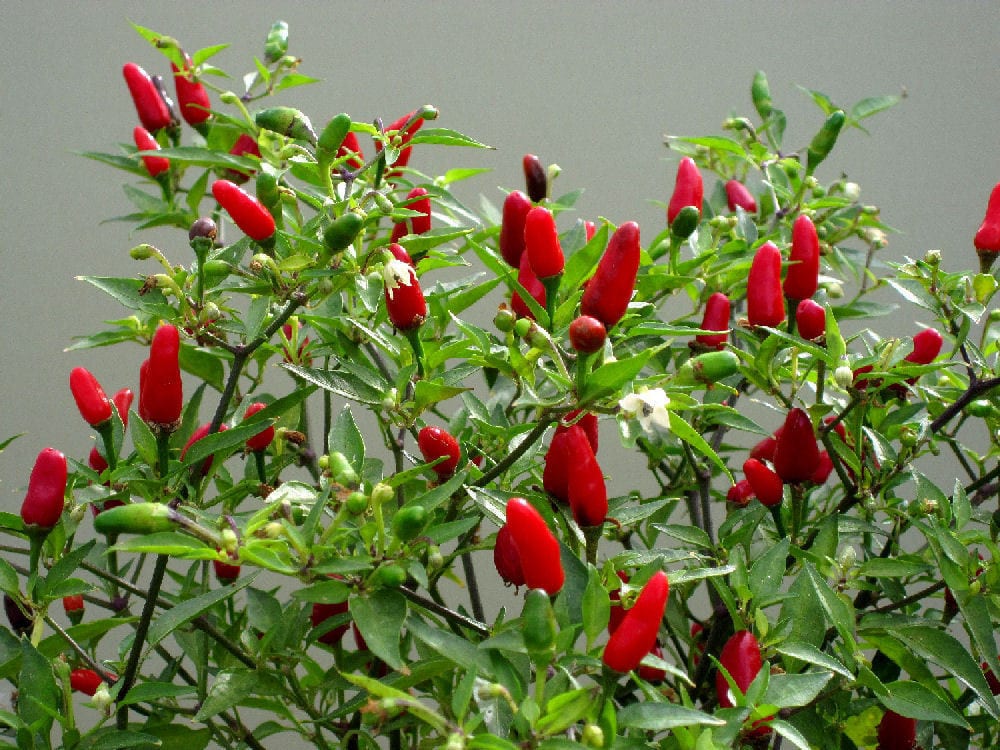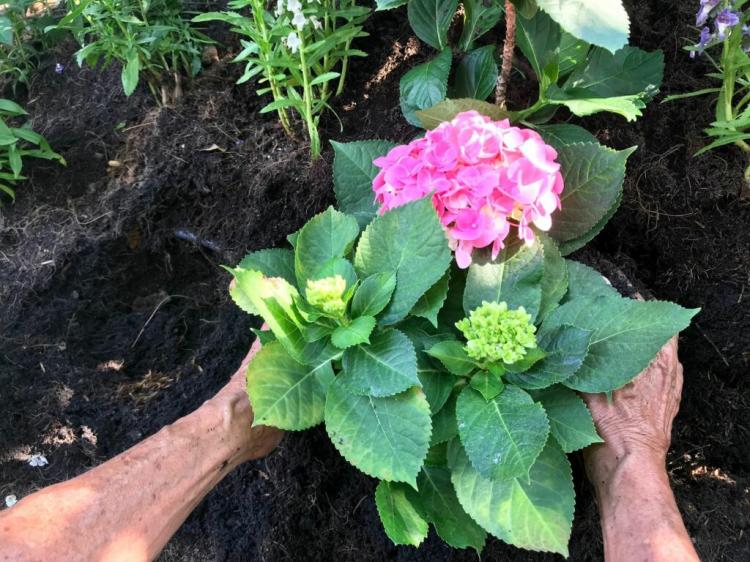Peppers that Grow Upwards

Planting peppers that grow upward will help you decorate your food garden and make it more attractive and productive. Some peppers grow up and out, creating an eye-catching contrast between the peppers and the foliage, while most garden peppers grow down so that the peppers dangle from the plant.
You might wonder which peppers grow upwards and add attractive peppers to your yard. Read through this comprehensive guide on peppers growing upwards.
Why do my Peppers Grow Upwards?
Table of Contents
Upward-growing peppers develop naturally. A gene controls whether a pepper hangs from the branch or grows upward.

Another thing to remember is that the downward-growing gene is dominant, whereas the upward-growing gene is recessive. As a result, when you gather and cultivate the seeds from the cross-pollinated plant, you’ll get downward-growing peppers if you cross a downward-growing pepper type with an upward-growing one.
It’s a little more difficult to understand why peppers, which typically grow downward, occasionally grow upward. Generally speaking, it is the outcome of a developing bud propelled upward by a development constraint.
For instance, the tiny blossom might have grown directly next to a garden stake or another plant branch. The stem grows sturdier and thicker at this point, and the growing pepper will climb higher as the fruit begins to form.
Which types of peppers grow upwards?
Before we look at several peppers that grow upward, take a moment to think about what your garden requires. You can choose from a few varieties if you only grow upright peppers for aesthetic reasons. But consider how much heat you can handle if you intend to produce peppers to eat them and add delicious flavor to your dishes.
Pepper cultivars use Scoville heat units (SHU) to gauge how hot a pepper is. Bell peppers are rated a 0 on this scale, meaning they are sweet and have no heat, while ghost peppers are rated between 855,000 and 1,463,000, which is highly hot. Jalapenos, which range from 2,500 to 8,000 on the index, fall under medium hot between these two rankings as a point of comparison.
Keep this index in mind when choosing what peppers to grow.
You Might Also Like How To Harvest Pepper Plants
Tabasco Peppers (30,000 to 50,000 SHU – Hot)

Tabasco peppers are chili peppers that grow to about 2 inches in length when fully grown, and when they mature, they turn to a vivid red hue. These peppers are best grown in pots because of their easy-to-maintain bushy yet tapered growth habit. These stunning green peppers eventually become orange and then crimson as they ripen. These peppers are ideal for cooking rather than eating raw because they are around 8 times stronger than a jalapeno pepper. The average number of peppers produced by tabasco pepper plants is 30, and they mature 80 days after germination.
Purple Tiger Peppers (5,000 SHU – Medium Hot)

Purple Tiger peppers are tiny, measuring only one inch long, but their eye-catching purple color makes it difficult to pass them up. These ornamental plants can be grown merely for their stunning appearance, but they also add a slightly spicy flavor to different meals. The Purple Tiger is ideal if you’re searching for a pepper with roughly the same spice level as a jalapeno. Gorgeous tri-colored foliage on the plant comes in creamy yellow, dark green, and midnight purple tones. Like tabasco peppers, Purple Tiger peppers thrive in pots and containers since they require sufficient drainage to avoid root rot.
Explosive Ember (30,000 to 50,000 SHU – Hot)

The hue of this decorative pepper dramatically changes as it ages. When young, these peppers have a deep purple color that occasionally appears black. When they ripen, they change color to a vivid orange and a blood-red hue. These plants are also on the short side, with a narrow, conical growth pattern, and the peppers are only about an inch long. On patios, explosive ember peppers thrive in small pots and can make a lovely flower bed border. Because the plant’s purple blooms are well-liked by pollinators, you can use Explosive Ember peppers to entice insects to your garden to increase crop production for harvest.
Fresno Peppers (2,500 to 10,000 SHU – Medium Hot)

Fresno peppers are as hot as Jalapeno peppers, if not hotter. These peppers have smokey, fruity undertones that give them more depth than jalapenos. Fresno peppers begin their lives by growing upright, but they grow downward as they get older and heavier. They are the ideal choice for backyard gardeners who want their vegetable patches to be useful and aesthetically beautiful due to their constantly changing appearance. Fresno peppers are green peppers that eventually turn orange and crimson as they ripen. Green peppers are typically mild, but as they mature, they become hotter.
Prairie Fire Peppers (70,000 to 80,000 SHU – Very hot)

Prairie Fire peppers have bright green foliage and peppers colored white, purple, yellow, orange, and red, which resemble Christmas lights strung together. Although they are regarded as fiery, these peppers have sweet overtones, making them rather tasty. These 1-inch peppers can do the job, whether you prefer to cultivate them purely for aesthetic purposes or to add flavor to your food. This ornamental pepper works nicely as a border for flower beds and grows in attractive pots and containers.
Masquerade Peppers (70,000 SHU – Very hot)

Don’t be fooled by the fact that these 3-inch-long peppers are primarily grown as ornamentals. Masquerade peppers are extremely hot—roughly eight times hotter than a jalapeno—but they taste as nice as they look. When they ripen, peppers’ healthy green tint changes to orange, red, and purple. These peppers are ready for harvesting 70 to 100 days after germination and can be picked anytime. These tiny bushes grow well with adequate sunlight and have the vivid green foliage typical of most pepper plants.
Chinese 5-Color Peppers (30,00 to 50,000 SHU – Hot)

Chinese 5-color peppers can be utilized similarly to cayenne peppers because they have a comparable heat level. They are a great alternative to cayenne pepper’s single-note flavor since they have a richer flavor and give the spice a hint of sweetness. The peppers are about an inch long, and, surprise, surprise, they come in five different hues: green, yellow, orange, red, and purple. The Chinese 5-color pepper plant is a beautiful ornamental because of its stunning array of hues, but it may also be a useful addition to your vegetable patch because of the pepper’s addictive sweet heat.
Thai Hot Ornamental Peppers (50,000 to 100,000 SHU – Very hot)

Thai Hot ornamental peppers are bright red peppers against a background of greenery, and they can be anywhere between 6 and 40 times hotter than a jalapeno pepper. As they ripen, these peppers change from green to yellow to red and become spicier. This type thrives particularly well in hot, humid locations where obtaining decorative plants can be difficult. Thai Hot ornamental peppers have a rich, earthy undertone that makes them perfect for salsas and hot sauces. They range in length from 1 to 2 inches.
You Might Also Like Harvesting Chillies
Calico Peppers (50,000 to 70,000 SHU – Very hot)

Avoid the calico pepper if you have delicate taste buds, or at the very least, limit your cultivation to aesthetic plants. The gorgeous deep green foliage of calico pepper plants, flecked with purple and cream spots, is highly sought after. The peppers themselves grow to a maximum of 2 inches in length. They are initially deep purple before turning bright red as they ripen. The calico pepper plant’s brilliant red peppers contrast dramatically with its dark purple foliage, creating a spectacular show of color that’s impossible to miss.
Advantages of Peppers that Grow Upwards
Peppers naturally grow upward, and they have the following benefits.
Pepper plants growing upwards are easier to harvest.
Compared to those facing the ground and concealed by the leaves, peppers that grow upward are simpler to spot and harvest. It will save time looking for the fruit, especially if you enjoy gathering green peppers. Because green peppers frequently conceal themselves in foliage, they are easier to harvest when grown upward.
Bell Peppers become more eye-catching.
For outdoor and indoor decorating, many people adore growing peppers with fruit that grows upward in pots. These peppers are perfect for planting in outdoor and indoor flower pots because they frequently come in eye-catching hues. Even little chili pepper varieties are frequently cultivated in pots and displayed in windows or workplaces.
Peppers that grow upwards are great garden decorations.
The peppers that grow upwards are the best option to decorate your house or yard while still having enough hot peppers for use in the kitchen. Compared to those growing downward, taking care of upward-growing peppers is simple. For instance, compared to peppers whose fruit is facing the ground, they typically yield more fruit.
FAQS: Peppers that Grow Upwards
Are Thai ornamental peppers edible?
Thai ornamental peppers are typically planted for their colorful fruits, although they also have edible fruits. But take care—most are too spicy to appreciate their flavor.
Can peppers grow vertically?
Peppers are one of the veggies that are most frequently grown vertically. Because they are comparatively simple to cultivate and are a lot of fun to watch ripen, pepper plants are one of the most favorite summer crops.
Can you eat ornamental peppers?
The colorful fruit is the reason ornamental pepper plants are planted. Although edible, ornamental peppers’ fruits have a variety of tastes depending on their types.
What type of pepper grows upside down?
Yes, pepper plants can grow upside down. Tabasco Pepper, Purple Tiger Pepper, Explosive Ember, Fresno Pepper, Prairie Fire Pepper, Masquerade Pepper, Chinese 5-Color Pepper, Thai Hot Ornamental Pepper, and Calico Pepper are some of the peppers that grow upside down.
Final Thoughts
Growing peppers that grow upwards may be a rewarding and thrilling experience, regardless of your level of gardening knowledge. These plants are great for favorite flavoring foods because they contain nutrients and distinctive flavors. Growing peppers also help in making your vegetable garden look colorful.
You’ll be rewarded with a plentiful harvest of delectable peppers if you give your plant the proper care and attention.





